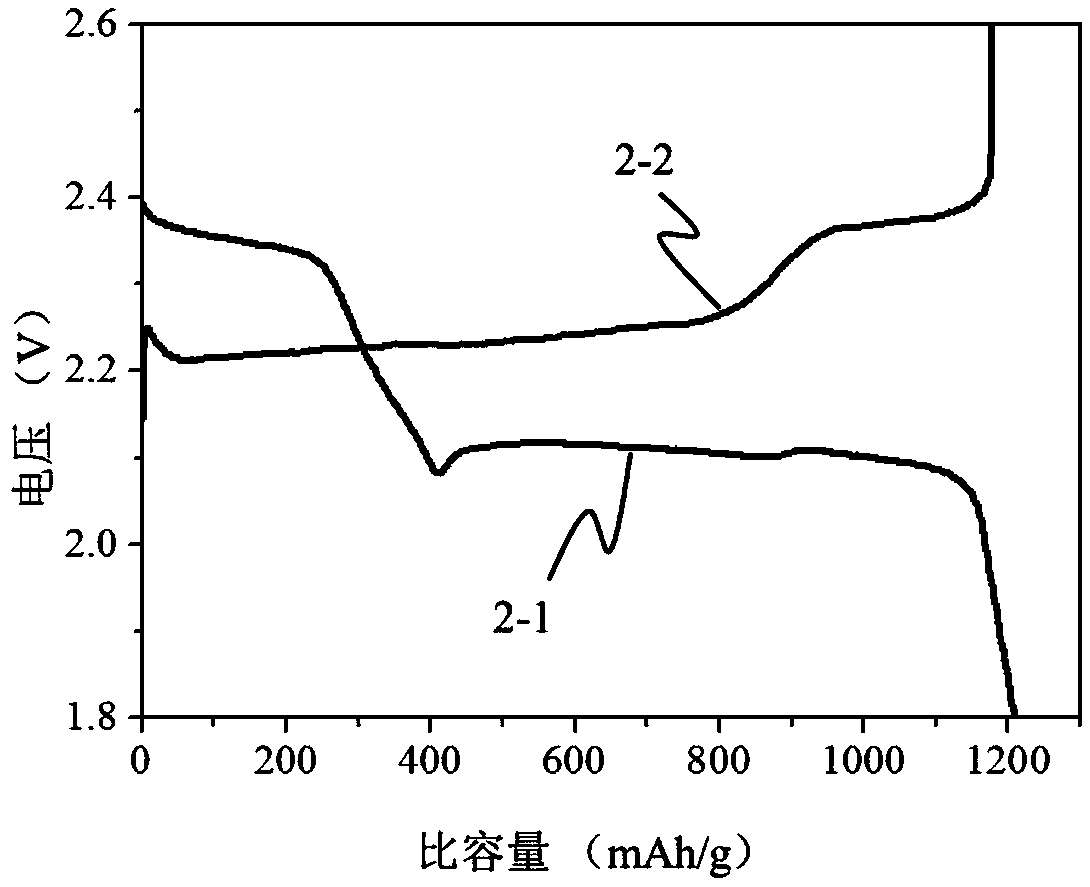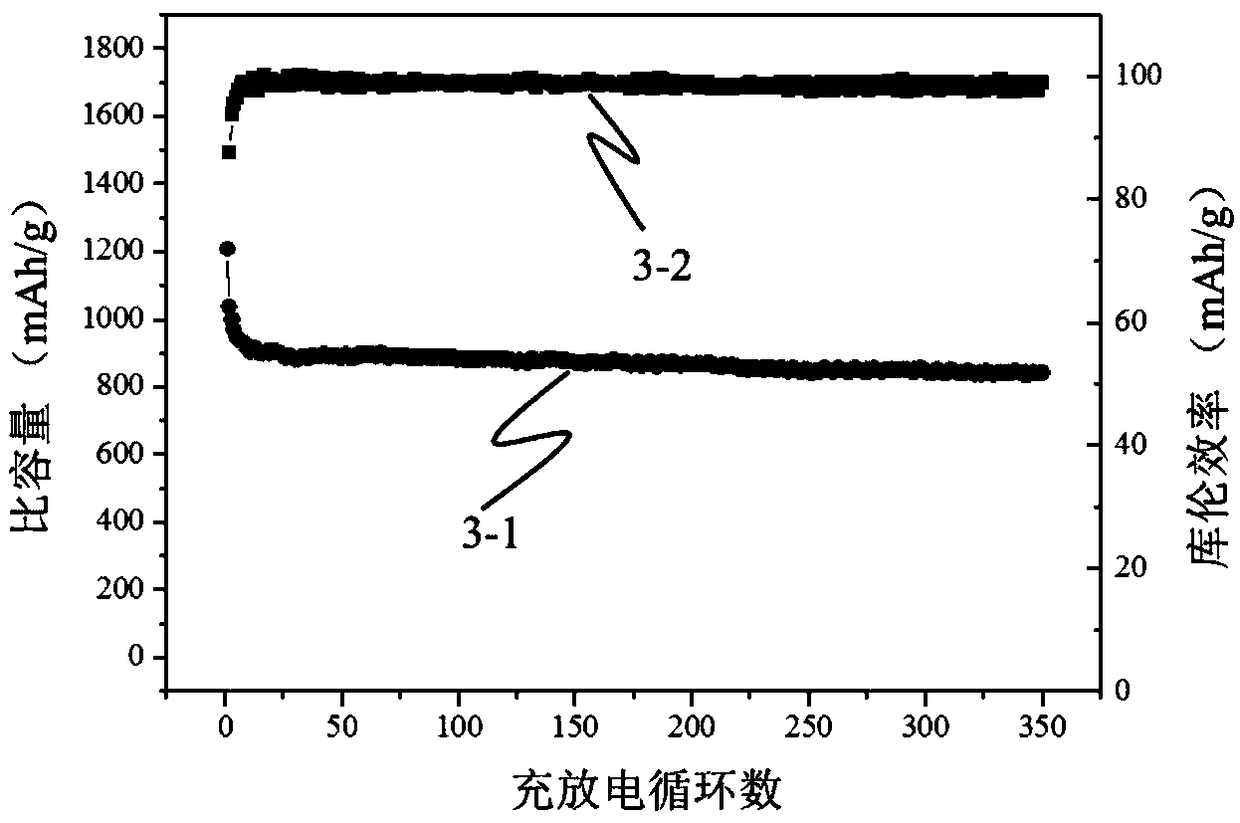Preparation method of lithium-sulfur battery using carbon-supported boron-lithium alloy as negative electrode material
A negative electrode material, lithium-sulfur battery technology, applied in the direction of lithium battery, electrolyte battery manufacturing, negative electrode, etc., can solve the problems of capacity loss, poor cycle life, lithium-sulfur battery capacity decline, etc., to improve life and reduce electrode , improve the effect of safety and reliability
- Summary
- Abstract
- Description
- Claims
- Application Information
AI Technical Summary
Problems solved by technology
Method used
Image
Examples
Embodiment 1
[0040] Embodiment one: the preparation of lithium metaborate
[0041] LiOH (23.9g) and boric acid (H 3 B(OH) 3 ) (74.8g) was dissolved in 200mL distilled water, stirred and dissolved, and evaporated to dryness by microwave. Heating to 600°C for dehydration for 6 hours to obtain anhydrous lithium metaborate.
Embodiment 2
[0042] Example 2: Preparation of carbon-supported boron-lithium alloy
[0043] Take the anhydrous lithium metaborate (1g) prepared in Example 1, add polyacrylonitrile powder (0.5g) in the ball mill tank at a mass ratio of 1:0.5, ball mill for 1 hour at a rotating speed of 1000rpm, and take out lithium metaborate and polyacrylonitrile. The mixture of acrylonitrile is placed in a stainless steel reactor, heated at 700°C for 5 hours after vacuuming, cooled to 600°C and vacuumed to remove the reaction atmosphere, and cooled to 25°C to obtain a carbon-supported boron-lithium alloy.
Embodiment 3
[0044] Embodiment Three: Binder Modulation
[0045] Add commercially available silicone gum (5 g) to 95 g of NMP (N-methylpyrrolidone), stir and heat to 90° C., stir for 2 hours to obtain a silicone gum NMP solution, and cool to room temperature for later use.
PUM
 Login to View More
Login to View More Abstract
Description
Claims
Application Information
 Login to View More
Login to View More - R&D Engineer
- R&D Manager
- IP Professional
- Industry Leading Data Capabilities
- Powerful AI technology
- Patent DNA Extraction
Browse by: Latest US Patents, China's latest patents, Technical Efficacy Thesaurus, Application Domain, Technology Topic, Popular Technical Reports.
© 2024 PatSnap. All rights reserved.Legal|Privacy policy|Modern Slavery Act Transparency Statement|Sitemap|About US| Contact US: help@patsnap.com










